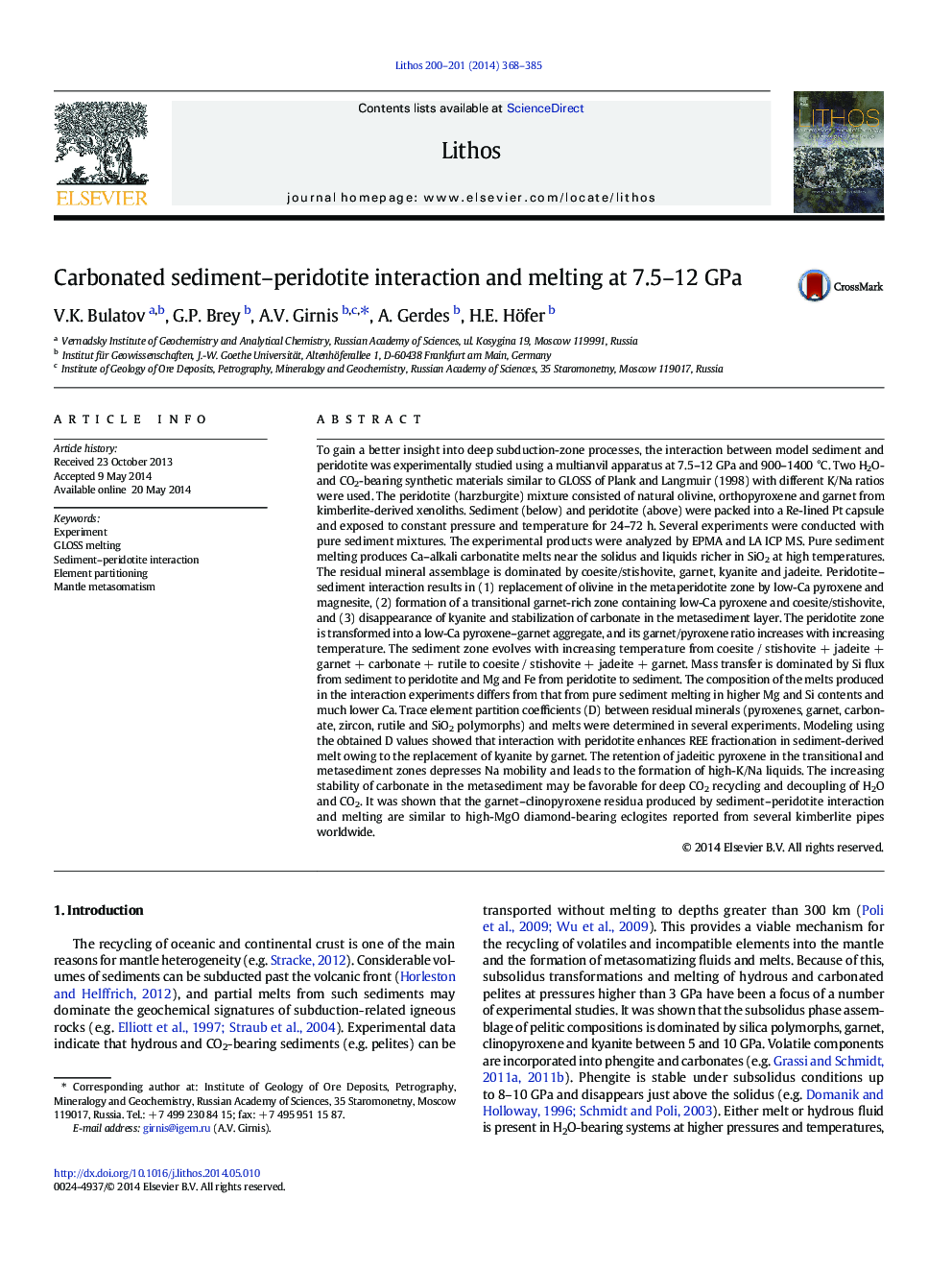| Article ID | Journal | Published Year | Pages | File Type |
|---|---|---|---|---|
| 6440815 | Lithos | 2014 | 18 Pages |
Abstract
To gain a better insight into deep subduction-zone processes, the interaction between model sediment and peridotite was experimentally studied using a multianvil apparatus at 7.5-12 GPa and 900-1400 °C. Two H2O- and CO2-bearing synthetic materials similar to GLOSS of Plank and Langmuir (1998) with different K/Na ratios were used. The peridotite (harzburgite) mixture consisted of natural olivine, orthopyroxene and garnet from kimberlite-derived xenoliths. Sediment (below) and peridotite (above) were packed into a Re-lined Pt capsule and exposed to constant pressure and temperature for 24-72 h. Several experiments were conducted with pure sediment mixtures. The experimental products were analyzed by EPMA and LA ICP MS. Pure sediment melting produces Ca-alkali carbonatite melts near the solidus and liquids richer in SiO2 at high temperatures. The residual mineral assemblage is dominated by coesite/stishovite, garnet, kyanite and jadeite. Peridotite-sediment interaction results in (1) replacement of olivine in the metaperidotite zone by low-Ca pyroxene and magnesite, (2) formation of a transitional garnet-rich zone containing low-Ca pyroxene and coesite/stishovite, and (3) disappearance of kyanite and stabilization of carbonate in the metasediment layer. The peridotite zone is transformed into a low-Ca pyroxene-garnet aggregate, and its garnet/pyroxene ratio increases with increasing temperature. The sediment zone evolves with increasing temperature from coesite / stishovite + jadeite + garnet + carbonate + rutile to coesite / stishovite + jadeite + garnet. Mass transfer is dominated by Si flux from sediment to peridotite and Mg and Fe from peridotite to sediment. The composition of the melts produced in the interaction experiments differs from that from pure sediment melting in higher Mg and Si contents and much lower Ca. Trace element partition coefficients (D) between residual minerals (pyroxenes, garnet, carbonate, zircon, rutile and SiO2 polymorphs) and melts were determined in several experiments. Modeling using the obtained D values showed that interaction with peridotite enhances REE fractionation in sediment-derived melt owing to the replacement of kyanite by garnet. The retention of jadeitic pyroxene in the transitional and metasediment zones depresses Na mobility and leads to the formation of high-K/Na liquids. The increasing stability of carbonate in the metasediment may be favorable for deep CO2 recycling and decoupling of H2O and CO2. It was shown that the garnet-clinopyroxene residua produced by sediment-peridotite interaction and melting are similar to high-MgO diamond-bearing eclogites reported from several kimberlite pipes worldwide.
Related Topics
Physical Sciences and Engineering
Earth and Planetary Sciences
Geochemistry and Petrology
Authors
V.K. Bulatov, G.P. Brey, A.V. Girnis, A. Gerdes, H.E. Höfer,
